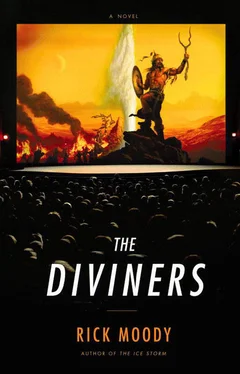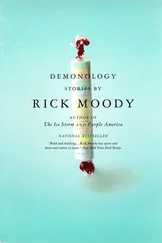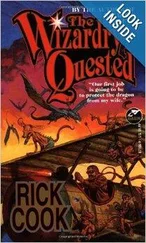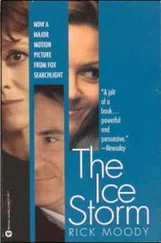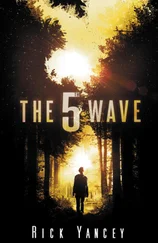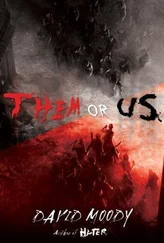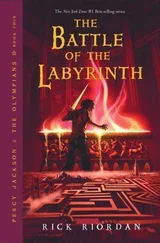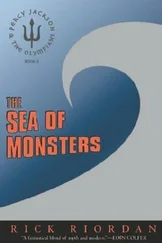Ivan Polanski has seen no indication of any of these things. Tyrone’s story, in any event, is simply part of Polanski’s broader survey of the history of the centaurs of the empire. He knows all of the great characters, their pedigrees, he knows about their bikes, the chromoly tig-welded tubing, alu frames, clincher rims, he knows that he presides over the twilight of a way of life. And this is what he’s thinking about when he gets the first call on Thursday morning. Couldn’t be easier, superficially speaking. Worldwide Plaza, Eighth Avenue, coming back to Rock Plaza, Fifth Avenue entrance. International Talent and Media. Movie stuff. Look, as a manager, he needs to ascertain that Tyrone is doing the work. He needs to know how fast the job can be done. He needs to know that the centaur still triumphs.
“Tyrone,” he barks, “ITM Worldwide Plaza. Going back to Rock Plaza. Here’s the paperwork.”
Tyrone is wearing black nylon bicycle shorts and a hooded sweatshirt. Tyrone is wearing a bandanna around his brow. Later these facts will be important. Tyrone is carrying a book, which he hides away quickly. Tyrone whispers an indication that he has heard the assignment.
“And from there downtown to twenty-one Wall. Understand?”
Tyrone nods, and then, as if wrestling with ghosts, his eyes bloodshot and narrow, he evacuates the premises, which are located above an Irish bar on Forty-seventh. All of this is not enough for Polanski. It is not enough to give Tyrone work; it is not enough to wonder about the inner world of Tyrone. It is not enough to be witness to the thinning of the ranks of the centaurs. Polanski has to challenge his employees. So what he does is: He gets Spicer on the horn. Mr. Spicer is the one with early Parkinson’s, who likes to sit in front of the McGraw-Hill building to watch the pretty girls. Polanski dials Spicer’s phone. There’s the usual fumbling.
“Polanski calling. Pickup. International Talent and Media, Worldwide Plaza, twenty-eighth floor, coming back to Rock Center, fourth floor, south building.”
Spicer repeats it all back.
“Let me make sure I’ve got it, please.”
“Don’t do this to me.”
“Read it back to me one more time,” Mr. Spicer says. “I’m seventy-four years old, forgoshsakes.”
A crosstown run. Ten or eleven blocks total, if you count the avenue blocks as two. As if any crosstown run were simple now. First, there are the jaywalking regulations. These have been promulgated from above, in this zero-tolerance time. Zero tolerance for broken windows, zero tolerance for panhandling, zero tolerance for the device known as the squeegee, zero tolerance for live music, zero tolerance for toplessness, zero tolerance for jaywalking, zero tolerance for dissent. On the avenues, you can still see them, looking twice, the jaywalkers, before making a dash for the other side. And yet there’s the fence that has just gone up in front of Radio City. The trucks, bearing advertisements for soon-to-fail Internet start-ups, are backed up on the side streets at two or three miles an hour. People are cursing. Jewelers are swarming onto the street. There is heavy cloud cover. It is to this midtown that the contestants now go to undertake their competition.
Polanski says to Edwin (Sanchez) from Delancey Street, “Twenty bucks on Spicer.”
Edwin replies, “The brother lives in the clouds. But he’s fast. Spicer has corns. He will stop at the Rite Aid in the McGraw-Hill building and complain. He will make conversation with a Haitian cashier.”
“Are you saying?”
“The bets are placed.”
Polanski also asks Daryl Standler, dope smoker, if he wishes to wager. Standler appears to mull it over for a long while. He, too, backs Tyrone. All this gambling takes place without considering the effect of the accident: the windows and the displays of Diamond Universe, 1200 Sixth Avenue, at the corner of Forty-seventh, still shattered, inside the ribbons of police tape. The sawhorses there, snarling the pedestrian traffic at the subway entrance. All the merchandise removed from the felt-lined display cases. The street in front is swarming with rented enforcement and with Hasidic guys protecting their family business. The car is still there, in fact. And Ramon Martinez, who drove up Sixth and then made the turn at high speed, against westerly traffic, going forty-nine miles an hour, Ramon Martinez, who uttered anti-Semitic oaths, where is he, exactly? After arraignment, he will certainly be moved from his cushy spot in the Tombs to maximum security at Rikers Island, where guys will shout encouragement and vilification at him from adjoining cells. His comely appearance will be the subject of intense scrutiny. Has he had his first shower yet? Three people are deceased, two of them Hasidic. Their families are weeping, and tabloid photographers are camped out in front of the relevant homes in Williamsburg, hoping for the perfect photograph. Again, on the televised news, Ramon Martinez makes the turn. Again, in diagrams. Again, he swings his LeSabre, with a hundred and sixty-three thousand miles on it, just wide of the subway stairwell and the lamppost that has the giant facsimile diamond on it; again, he wipes out a garbage can; again, three pedestrians to the immediate south of the driver’s side leap clear. One, a former high school basketball star, sustains a back injury, and two dive to the curb and are nearly run over by a taxi crossing west on Forty-seventh. Nearby: a guy holding a falafel sandwich, bantering with another guy checking his watch, and, by coincidence, an Arabic teenager. All are driven upward into the windows. Again, we watch the Schappell footage, which confirms this interpretation. It was taken by an astute passerby from St. Louis, Norm Schappell, he of the digital camera and unsteady hand. Now the car jumps the curb, and it seems in the little windows of low-resolution imagery as though Martinez is shaking a fist, as though at this moment, when he is furthest from God, he imagines he is God’s agent of vengeance. Into the reinforced storefront he goes, which should forbid such things. Again, the alarm goes off, and the taxi behind swings wide, hits a parked car on Sixth Avenue. Now the screams. On the news, the footage scrolls, the Schappell footage, and the mayor says at the press conference that this is a hate crime until proven otherwise. “There is no room in our city for hatred and ignorance, for division and prejudice. The world lives in New York City.” Martinez does his duckwalk that evening in leg irons, his arm in a sling. As the reporter on the UBC affiliate notes, giving away a closely held trade secret, the police sometimes put the leg irons in the freezer, back at the precinct. Because frozen leg irons hurt like hell.
This is what the rental enforcement guys tell Mr. Spicer. He stands at the corner, taking in the expanse of the tragic incident. It’s just too much of an enticement. At the three-minute mark in the competition, Spicer is just getting going. Saying to whoever might listen, “What did this city ever do to this young man? We did nothing to him! Did someone deny him a job? I didn’t deny him a job! I just want to deliver messages in peace. Did I ever do anything to hurt him?”
Meanwhile, Tyrone is on the glide. Tyrone has a theory. This is his theory, which has to do with inertial bodies, bodies moving at constant speed in a horizontal direction, unless additional forces are impressed upon them. His theory of the glide is first a theory of orbit. Tyrone feels the orbit on his bike, which is to say that his bike is the Mysterium Cosmographicum, and his responsibility is not the delivery of messages, which is an interruption of his true calling. His responsibility is the glide, and his responsibility is the relation between large bodies, a refutation of the origins of astronomy. He flings a lanky leg over the saddle. He’s off. On a Surly Steamroller, fixed gear, in baked-bean brown, no brakes, as befits a bike with this illustrious name, Mysterium Cosmographicum. Since the glory period of the messenger, there are no longer any brakes, and indeed, this, in the physical meditations of Tyrone Duffy, philosopher of elementary systems, painter of Newtonian phenomena, is a feature of necessity, because brakes impede the glide. Tyrone needs to glide, and the glide needs no brakes.
Читать дальше
